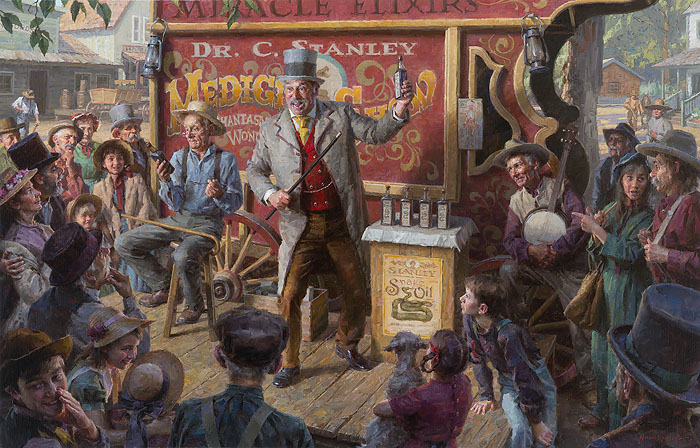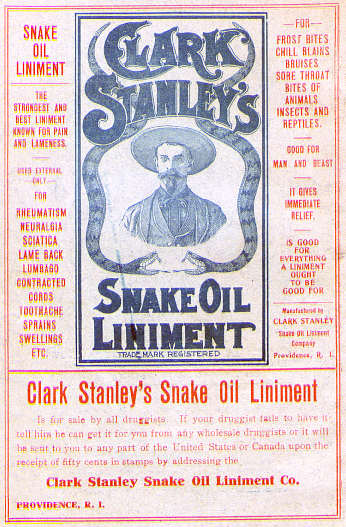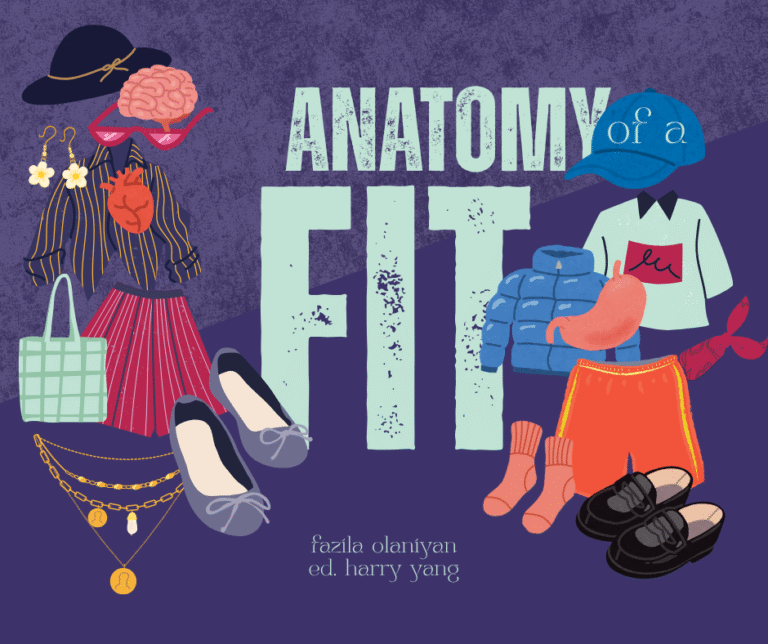
By Mansimran Loyal; Edited by Katerina Theocharous
The phrase ‘snake oil salesmen’ conjures images of sleazy businessmen, peddling worthless, overpriced products to unsuspecting customers. Today, it is commonly used to describe self-proclaimed health and lifestyle experts pushing “cure-all” elixirs and quick fixes, found everywhere from Instagram and shopping centres to late-night TV. In 1800s America, it was an expression for cowboy con men who would go from town to town pitching so-called miracle cures to the masses.
However, snake oil has been used for centuries in traditional Chinese medicine to treat joint pain such as arthritis and bursitis. It is obtained by boiling Chinese water snakes and skimming fat from the top of vats. The anti-inflammatory benefits of snake oil come from its high omega-3 fatty acid content, which, at 20% of body weight, is higher than in salmon.
So if snake oil is genuinely helpful – how was the term ‘snake oil salesmen’ coined?
Between 1849 and 1882, about 180,000 Chinese workers migrated to the United States to work on the Transcontinental Railroad. As well as their labour, Chinese railroad workers brought along their culture and traditions, including medicines such as snake oil. Snake oil was used as an ointment for sore joints after a long day of work, and over time, word spread amongst existing American settlers about its healing efficacy. However, the supply of water snakes dwindled over time, and healers turned to rattlesnakes to make snake oil. Rattlesnakes are a lot lower in omega-3 fatty acid content, so this oil was less potent.
Keen Western entrepreneurs seized upon this emerging market, using elaborate theatrics and showmanship to peddle their products. However, there was one snake oil salesman who stood above the rest – Clark Stanley, the “Rattlesnake King”. Stanley was a former cowboy who became enamoured with the antiquity and mysticism of snake oil and paired with a pharmacist from Boston to create “Clark Stanley’s Oil Liniment”. To say his advertising was misleading is putting it lightly, as Stanley claimed his product cured everything from a sore throat and hair loss to skull fractures. Yet people bought into his Stanley’s outrageous claims, likely due to his charismatic theatrics.

The Rattlesnake King first presented his product at the 1893 Chicago World Fair, where he garnered the attention of his audience using a concocted backstory. Stanley began by recounting how, as a cowboy, he learned of snake oil from a mystical Hopi Indian healer. This was followed by a live demonstration, where he pulled a writhing rattlesnake out of a bag, slit its throat, boiled it, and skimmed and bottled the resulting oil. He even paid audience members to shout during the performance that Stanley’s snake oil had cured their ailments.
The demonstration was a massive success and Stanley’s sales boomed, allowing him to sell snake oil for twenty more years. However, over time he did attract many sceptics, including Samuel Hopkins Adams. Adams was a writer and journalist who sought to out Stanley as a fraud. In 1905, Adams published his expose, titled “The Great American Fraud”, that sparked public outcry against snake oil. Then, in 1906, the Congress passed the Pure Food and Drug Act, which mandated the testing of medical products.
In 1917, a shipment of “Stanley’s Snake Oil Liniment” was seized and tested by federal investigators, who discovered that it had no snake oil at all. Instead, the primary ingredient was mineral oil, with trace amounts of beef fat, capsaicin, and turpentine. As it turned out, only Stanley’s oil sold at the 1893 Chicago World Fair had actual rattlesnake oil in it. As for Clark Stanley, he was branded a fraudster and fined a whole $20 for false advertising.
The Rattlesnake King’s demise became public knowledge, and the phrase ‘snake oil salesmen’ has become synonymous with fraudsters and peddlers ever since. However, it is worth remembering that, at the beginning of it all, snake oil was an efficacious traditional medicine introduced to the Western world by immigrants who had used it for centuries. The reputation and role of complementary and alternative therapies in modern healthcare has always been complex, and is only made more so by the increasing commercialisation of medicine and, in the era of COVID, the increasing political implications attached to different approaches.
Evidence-based medicine is vital when trying to provide gold-standard care, but it will not always capture the complexity of a patient’s situation and their concerns. Sometimes, providing best practice requires a knowledge of culture, tradition – and a little bit of history.












































































































